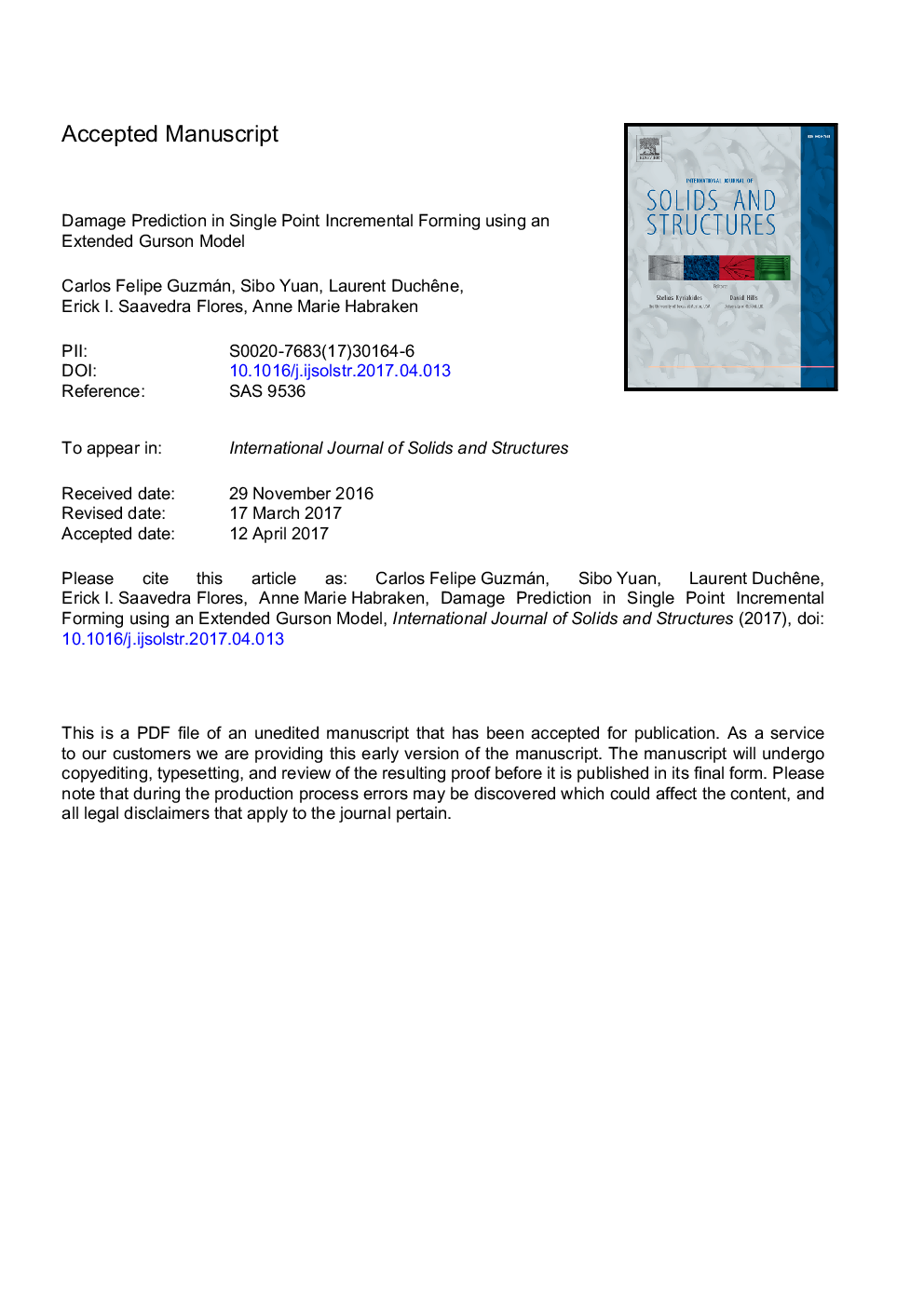| Article ID | Journal | Published Year | Pages | File Type |
|---|---|---|---|---|
| 10225386 | International Journal of Solids and Structures | 2018 | 46 Pages |
Abstract
Single point incremental forming (SPIF) has several advantages over traditional forming, such as the high formability attainable by the material. Different hypotheses have been proposed to explain this behavior, but there is still no straightforward relation between the particular stress and strain state induced by SPIF and the material degradation leading to localization and fracture. A systematic review of the state of the art about formability and damage in SPIF is presented and an extended Gurson-Tvergaard-Needleman (GTN) model was applied to predict damage in SPIF through finite element (FE) simulations. The line test was used to validate the simulations by comparing force and shape predictions with experimental results. To analyze the failure prediction, several simulations of SPIF cones at different wall angles were performed. It is concluded that the GTN model underestimates the failure angle on SPIF due to wrong coalescence modeling. A physically-based Thomason coalescence criterion was then used leading to an improvement on the results by delaying the onset of coalescence.
Related Topics
Physical Sciences and Engineering
Engineering
Civil and Structural Engineering
Authors
Carlos Felipe Guzmán, Sibo Yuan, Laurent Duchêne, Erick I. Saavedra Flores, Anne Marie Habraken,
